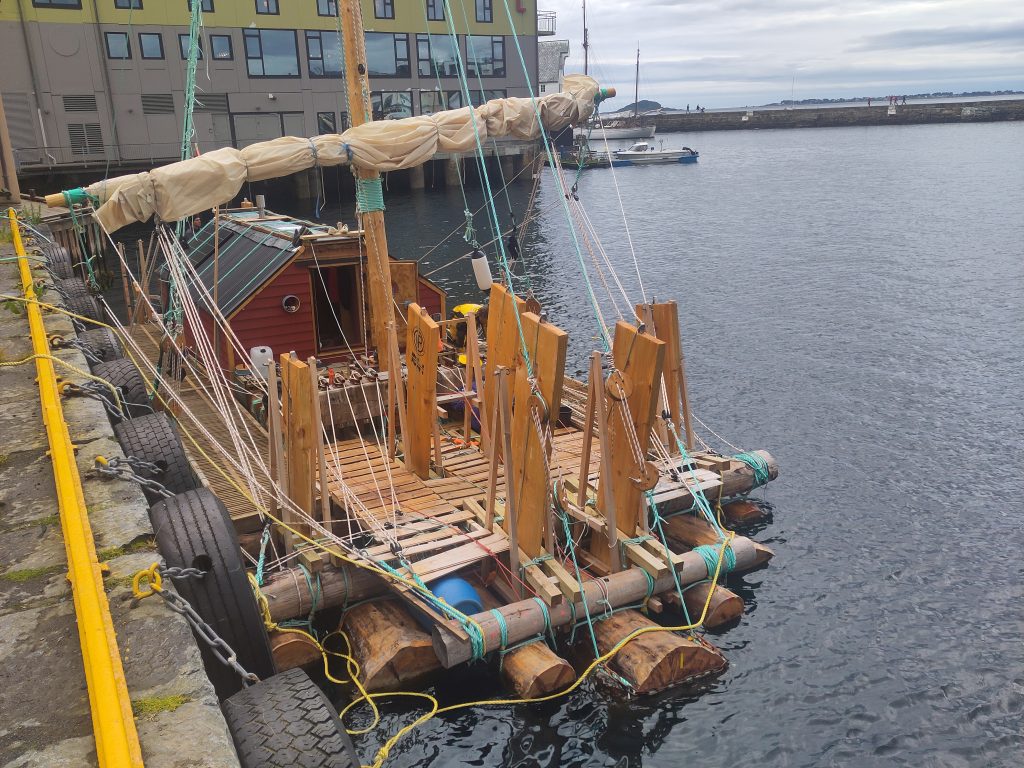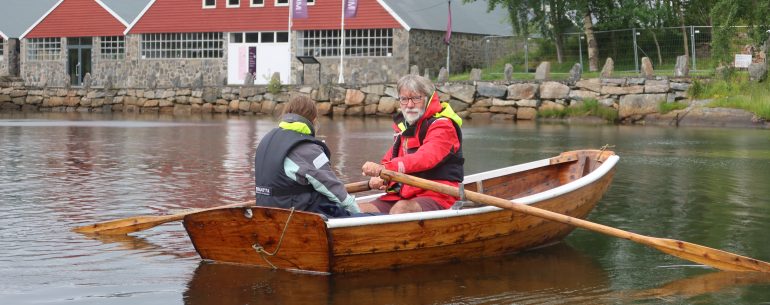With a few days to spare before a crew changeover, we spent some time exploring Ålesund. The first morning we got up and spluttered into our tea when we saw that they had built a huge block of flats at the end of the harbour. We quickly realised that no-one could built that fast and that what we were seeing was a cruise ship moored across the other end of the harbour. Actually it turned out it was three cruise ships, so we knew it would be a busy day in town.
The first place we headed for (with a reasonable day’s forecast) was the Sunnmøre Museum. This is a combined museum with a range of buildings from the 18th and 19th centuries with a few older ones and some which were slightly newer. The buildings included farms, storehouses and barns, schools, boat sheds and all the other various buildings which enabled people to survive in what must have been quite a harsh climate.
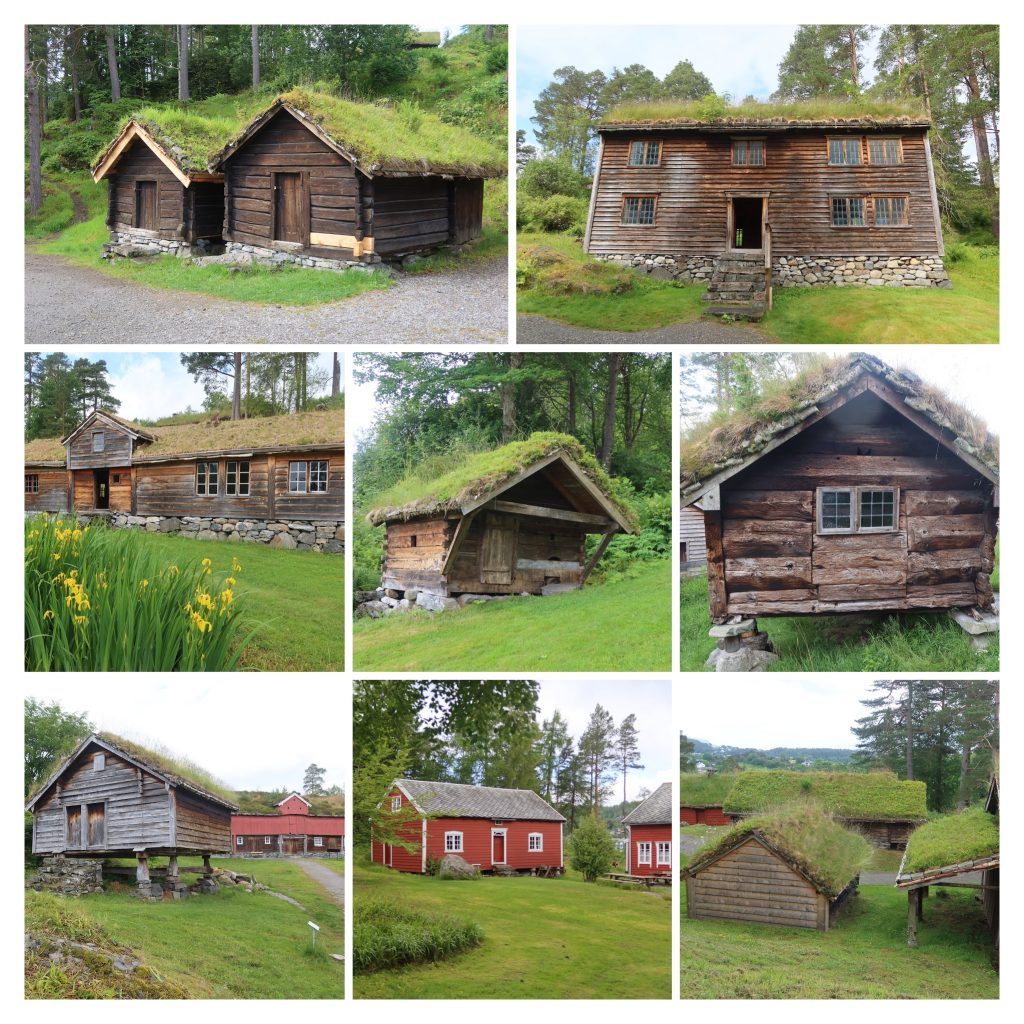
The other aspect of the museum was various boat houses. These had a range of boats, from replica Viking boats through to the traditional church boats (used to ferry all the villagers to church) and the range of traditional fishing boats – initially sailed or rowed, but subsequently powered by engines.
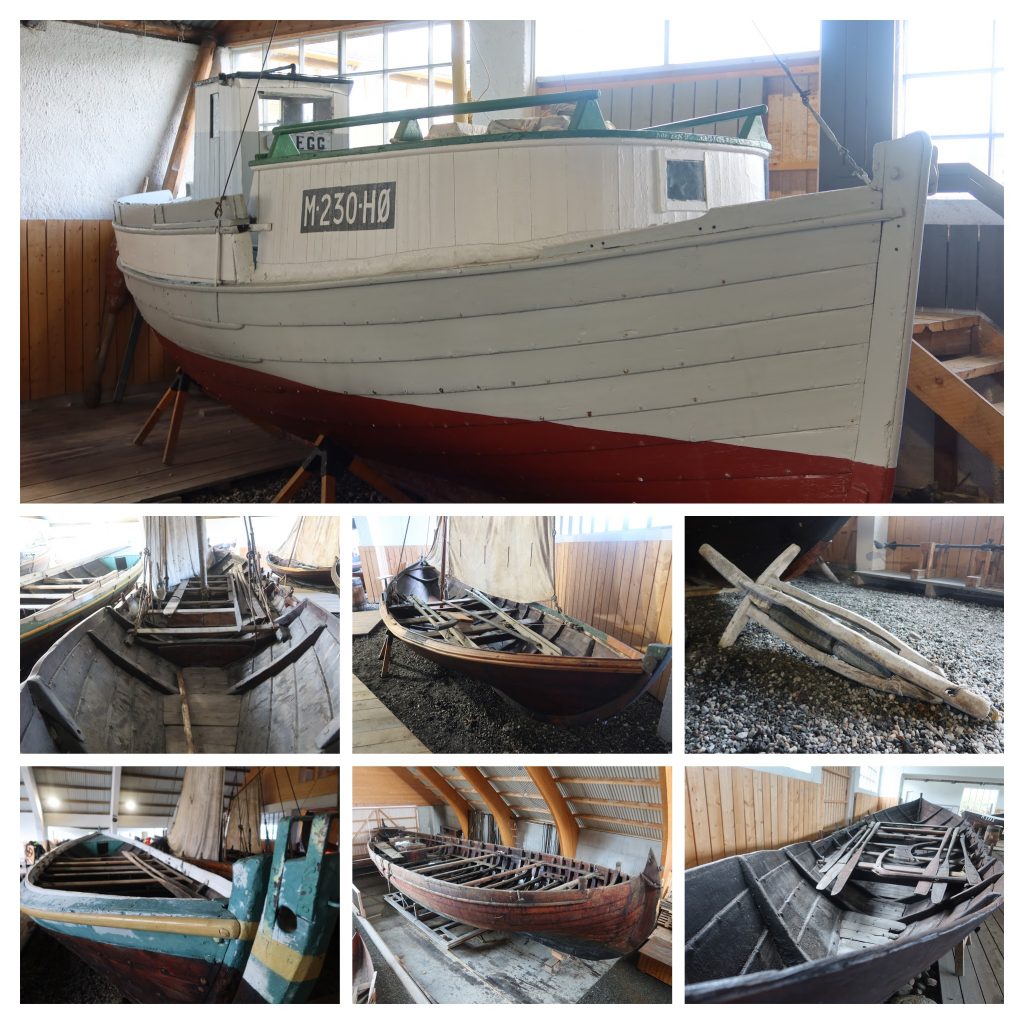
One boat had a particularly intriguing back story. This region was a centre for The Shetland Bus. This was a clandestine Special Operations Group which transported people, equipment and boats between the Shetlands and occupied Norway. Its official name was the Royal Norwegian Naval Special Unit (RNNSU), but it is far better known as The Shetland Bus. One of the boats used was called the Bergholm. On March 22nd 1943 she was spotted by German aircraft and attacked. The boat was so badly damaged that they had to take to the lifeboat (despite it being in poor condition after the attack) and with only three of them well enough to row, they managed to row over 250km back to Torholmen where they were hidden by a friend. After 5 days they were recovered by a Norwegian submarine and returned to Shetland but the lifeboat remained hidden under a boathouse until after the war was over. it was then donated to the museum.
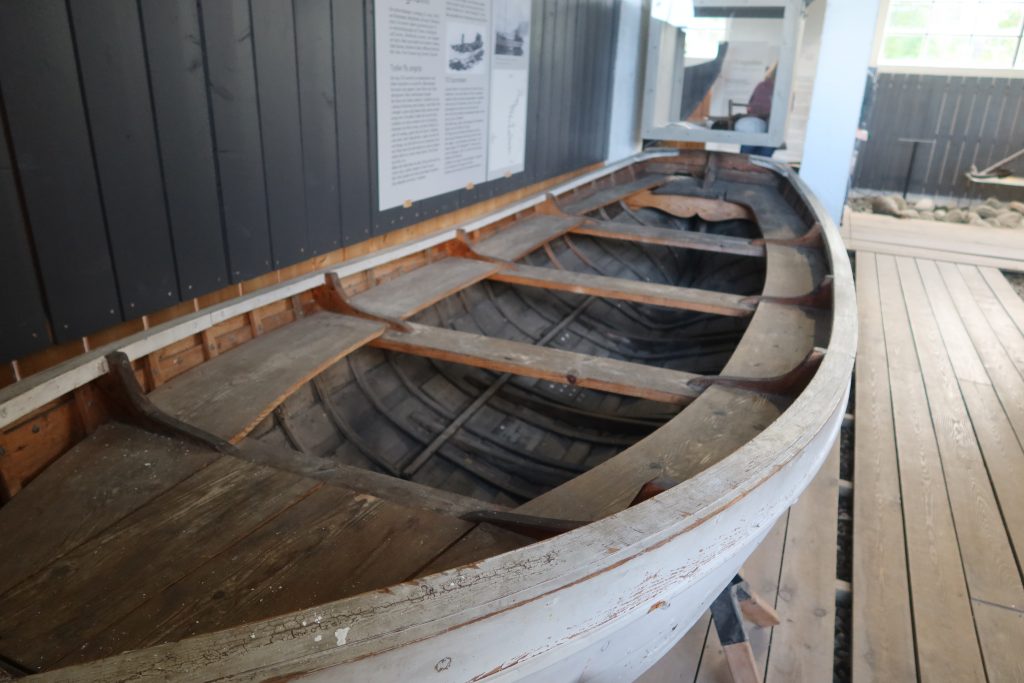
We also went for a row on the lake there – well it was on offer, so why not – and tasted potato cakes cooked in the traditional way in one of the houses.
Over the next few days we did various other things. One of those was visiting the fish museum to get a low-down on the production of cod-liver oil (well they caught a lot of cod round here!) and also on the production of klippfisk or clipfish. This translates literally as cliff-fish. Klippfisk is basically dried and salted cod. Traditionally the fish was dried outside by the wind and sun, often on cliffs (hence cliff-fish) and other bare rock-faces. They had to take care though not to get it wet as it dried, something which must have been quite a challenge given our experience of the Norwegian climate! Today it is dried mechanically using electric dryers. It is one of the oldest forms of food preservation and was essential for maintaining them through some pretty harsh winters.
The rest of the time was spent watching the boat as winds of 35-40 knots whistled through the harbour and managing Norwegian powerboaters who were far more interested in partying than tying their boats up properly ….
On the last day we wandered over to have a look at one of the more interesting visitors. At first we thought it was a direct replica of the Kon-Tiki, but on closer examination it was very similar, but with a whole load of daggerboards all around the raft. These daggerboards are then used to steer the raft by moving around the centre of effort to change direction. This is thought to be a Polynesian method of steering, but wasn’t used by Heyerdahl on the Kon-Tiki expedition, so they are using a full-scale raft to try and test the theory and see if this was a viable method of sailing the rafts. They are testing this by trying to sail up to Lofoten and then possibly Greenland – probably quite slowly, particularly given that they can only make about 90 degrees to the wind!
